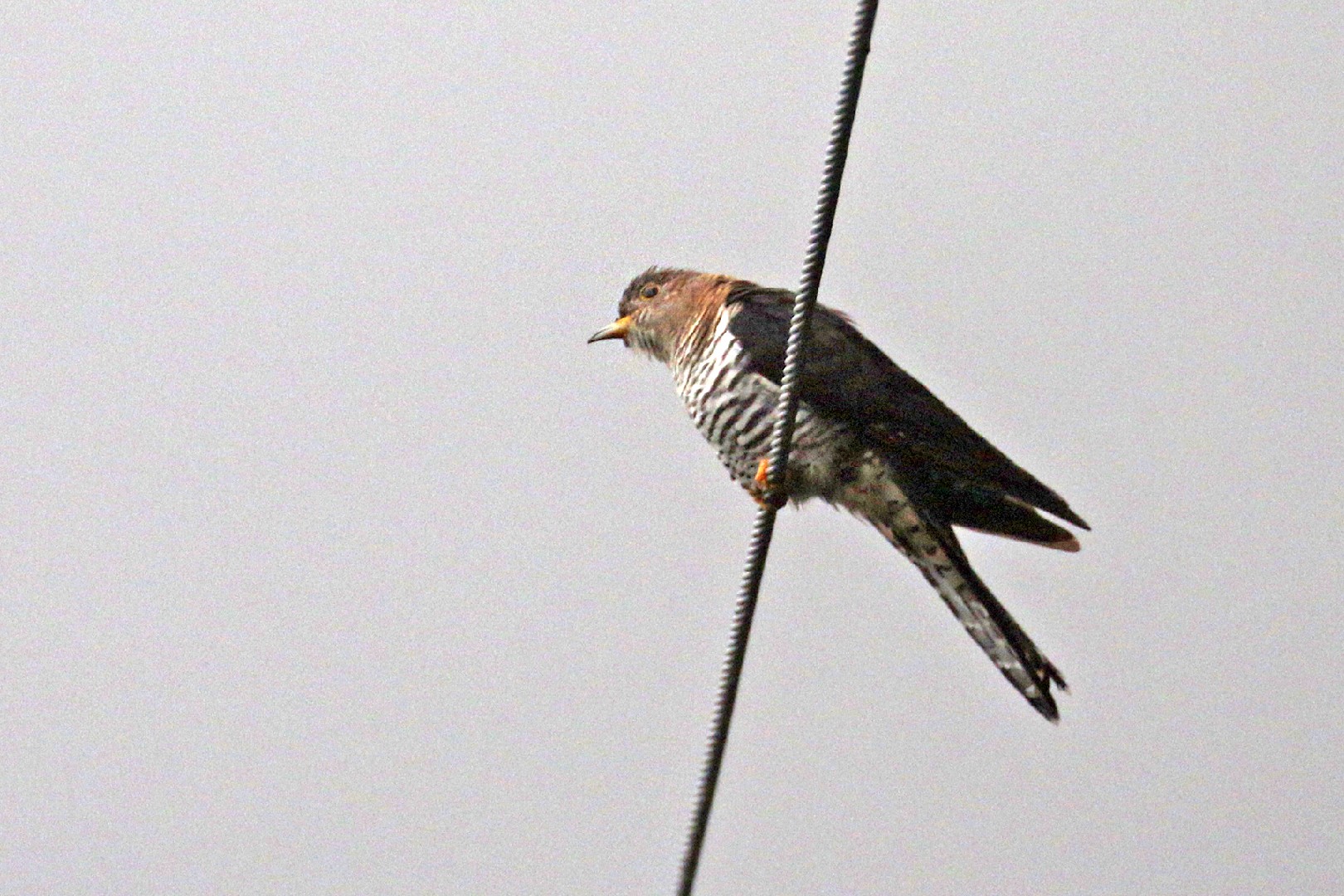Oriental Cuckoo
A species of Typical Cuckoos Scientific name : Cuculus optatus Genus : Typical Cuckoos
Oriental Cuckoo, A species of Typical Cuckoos
Botanical name: Cuculus optatus
Genus: Typical Cuckoos
Content
Description General Info
 Photo By Charley Hesse TROPICAL BIRDING
Photo By Charley Hesse TROPICAL BIRDING Description
It is 30-32 centimetres long with a wingspan of 51-57 centimetres and a weight of 73-156 grams. The adult male has a grey head, breast and upperparts. The belly is creamy-white with dark bars. The vent is frequently buff with few markings. The legs and feet are orange-yellow and there is a bare yellow ring around the eye. Adult females and juveniles occur in two morphs. The grey morph is similar to the male but has a brownish wash on the breast. The rufous morph is reddish-brown above, paler on the underparts and with strong dark barring all over including the rump. The common cuckoo (C. canorus) is very similar in appearance but is slightly bulkier with longer wings and tail and a slightly smaller head and bill. It is slightly paler grey and the barring on the underparts is a little narrower. The vent is usually white with dark bars but is more similar to Oriental cuckoo in a few individuals. Birds of the rufous morph have a plain rump with no dark bars unlike the Oriental cuckoo. The Himalayan cuckoo (C. saturatus) is extremely similar to the Oriental cuckoo but is slightly smaller and shorter-winged. The call of the male Oriental cuckoo is a series of low paired notes, poo-poo, with both notes stressed equally. It is somewhat similar to the call of the hoopoe. It may be introduced with a four to eight note phrase or sometimes with grating notes. The female's call is a deep bubbling trill. Outside the breeding season, the birds are usually silent. The call of the male Himalayan cuckoo is a series of three or four note phrases with a short, high-pitched introductory note. 
Size
23 - 41 cm
Nest Placement
Tree
Feeding Habits
Oriental Cuckoo primarily feed on a variety of insects, such as caterpillars, grasshoppers, and beetles, using adept hunting techniques. They also consume other arthropods, fruits, and plant material, occasionally including eggs, showcasing their opportunistic diet.
Habitat
The oriental Cuckoo inhabits mixed coniferous-deciduous forests and taiga, thriving in environments from lowland orchards to hill country. Primarily found below 1000 meters in Northeast Asia, it ascends to 4500 meters in Southwest China's beech forests during the breeding season. Winters see the oriental Cuckoo in diverse forests and savannas of Southeast Asia, occasionally reaching swamps and mangroves.
Dite type
Insectivorous
General Info
Feeding Habits
Bird food type
Distribution Area
It has a large breeding range in northern Eurasia. It breeds across much of Russia west to the Komi Republic with occasional records as far west as Saint Petersburg. It also breeds in northern Kazakhstan, Mongolia, northern China, Korea and Japan. The exact extent of its wintering range is uncertain due to its secretive habits and the difficulty of separating it from the Himalayan cuckoo and other similar species. It is believed to include the Malay Peninsula, Indonesia, the Philippines, New Guinea, western Micronesia, the Solomon Islands and northern and eastern Australia with occasional birds reaching New Zealand. It has occurred as a vagrant in Ukraine, Israel and Alaska. 

 Photo By Charley Hesse TROPICAL BIRDING
Photo By Charley Hesse TROPICAL BIRDING Scientific Classification
Phylum
Chordates Class
Birds Order
Cuckoos and Relatives Family
Cuckoos Genus
Typical Cuckoos Species
Oriental Cuckoo